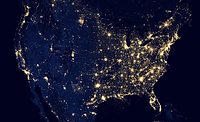With 55 plants and nine corporate campuses, as well as parts stores, customer service and sales centers, warehouses and distribution centers around the world, the global security department at Ingersoll Rand has quite a few different environments to deal with, says Director of Global Security Rick Kelly. “We are charged with protecting our people, our assets, our reputation and brand. We do that through a holistic risk-based approach, which provides value-added solutions to our business units and mitigates risk and thereby adding to the bottom line and the profitability of the company by assisting them to reach their goals, without disruption,” says Kelly.
The global security function didn’t even exist at Ingersoll Rand until Kelly came on board. “I’m responsible for building the program from the ground up, and, at the same time, dealing with all of the tactical issues that come in on a daily basis,” he says. “Never a day goes by when you’re doing the same thing. There’s always a different issue to address; there’s always a different problem that pops up.”
Operating in precarious areas of the world keeps Kelly’s job challenging, as does being involved in the supply chain. “We have products and supplies that we need to make our products flowing back and forth throughout different channels across various geographies that are somewhat risky,” Kelly says. The company also uses precious metals in their products, which creates risks of theft and loss.
Kelly’s team focuses on three critical issues, the first of which is travel security. “It was the number one issue I looked at when I came in. We put some really good controls in place to ensure our travelers are fully briefed and aware of security issues and risks wherever they’re traveling,” says Kelly. Personal security details are also provided for travelers going into high/extreme risk locations.
Another area requiring immediate improvement when Kelly arrived was crisis management and business continuity. Kelly’s team overhauled the crisis management program and put together a good operational plan. “Now we’re working to improve our business continuity posture as well across the organization,” he says.
The third focus, physical security, includes not just locations and people, but technology as well, says Kelly. “We built solid standards and specifications and we are standardizing processes across the organization,” he says. “We have one particular system that will manage access control, cameras, alarms and monitoring instead of a diversified bunch of equipment.”
One thing that impressed Kelly the most about Ingersoll Rand was the C-suite’s focus on the importance of security. “They’re very understanding of what risk is and how to mitigate it, and they’re very supportive of what we want to do and how we want to do it,” he says. They are also good about enforcing security initiatives and supporting security programs to other Ingersoll Rand leaders.
The perception of the security brand among Ingersoll Rand employees is evolving, Kelly says. “When I came in and we started socializing the message of what security is about, most employees hadn’t seen that kind of program and didn’t know what it was,” he says. “As we start to educate the employee base from senior managers on down, people are starting to understand why access control, travel security, information security and the like are important.”
Customers and clients are likewise happy to hear that the company has developed a robust security program and is meeting its security objectives. “I think it gives them a bit more comfort, and it underpins our standing as a company when it comes to ethics and compliance,” says Kelly.
The enterprise security team uses surveys and metrics, which consider the cost, the savings and the spend. “We talk about cases, how long they take to resolve, look at loss numbers and investigations,” Kelly says. There are also key performance indicators to measure the third-party security officers the company uses. “All of this gives us a pretty good profile of what we’re doing as a function, looking at how much we’re saving the organization or how much we’re adding value, as well as how business is able to achieve their goals and objectives to help them navigate through problems,” he says.
The security team’s biggest contribution to the company thus far is getting employees to not only understand, but implement, what’s important when it comes to security. “There’s a definite paradigm shift in how people view the security function and how they carry out their day to day activities now,” Kelly says.
Security Scorecard
- Annual Revenue: $13 Billion
- Security Budget: $15 Million
Critical Issues
- Cybersecurity
- Workplace Violence
- Loss Prevention



